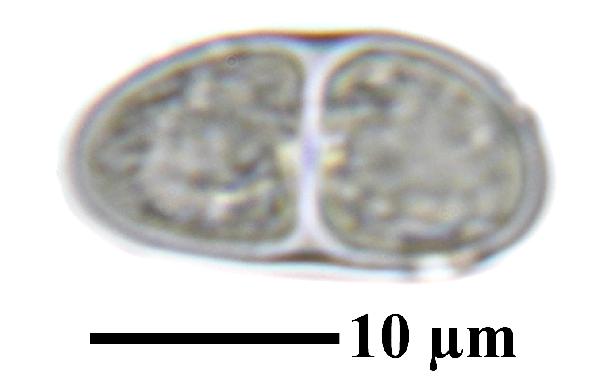Kuettlingeria aetnensis (B. de Lesd.) ined.
(provisionally placed here, ICN Art. 36.1b). Basionym: Caloplaca aetnensis B. de Lesd. - Bull. Soc. Bot. France, 82: 317, 1935.
Synonyms: Pyrenodesmia aetnensis (B. de Lesd.) S. Y. Kondr.
Distribution: C - Tosc (TSB 18723). S - Si (Loppi & al. 1997, Søchting 2001, Ottonello & Puntillo 2009).
Description: Thallus crustose, episubstratic, white, thick, areolate, the areoles flat to convex, contiguous to usually scattered, more or less smooth, white-pruinose, often lobulate, usually forming a large, discontinuous patch. Apothecia common, lecanorine/zeorine, rounded, sessile, slightly constricted at base, up to 1.5 mm across, with a bright rusty red, flat to convex disc, a thick, somehow paler proper margin, and a white thalline margin which is well-evident in young apothecia only. Proper exciple orange in outer part, colourless within, the pigmented parts K+ purple-red, C+ purple; epithecium orange-brown, K+ purple-red, C+ purple; hymenium colourless, 70-90 μm high; paraphyses simple or sparingly branched, thickly septate towards the tips, the apical cells to 4 μm wide; hypothecium colourless. Asci 8-spored, cylindrical-clavate, functionally unitunicate, apically thickened with a broad internal beak, the inner part of apex and external cap I+ blue, Teloschistes-type. Ascospores 2-celled, polarilocular, hyaline, ellipsoid 12-18 x 7-10 μm, the equatorial thickening (“septum”) 1/3-1/4 of spore length. Pycnidia dark, immersed. Conidia ellipsoid, 1-celled. Photobiont chlorococcoid. Spot tests: thallus K-, C-, KC-, P-; apothecia K+ purple-red, C+ purple (both disc and proper margin). Chemistry: thallus without lichen substances or with low amounts of the Sedifolia-grey pigment; apothecia with chlorinated anthraquinones in both margin and disc: 7-chloroemodin (major), fragilin and emodin (minor).Note: a Mediterranean lichen found on soil deriving from volcanic base-rich rocks, more rarely directly on weathered volcanic rocks, common only in parts of Sicily, especially in the small volcanic islands, clearly related to K. erythrocarpa.
Growth form: Crustose
Substrata: rocks, soil, terricolous mosses, and plant debris
Photobiont: green algae other than Trentepohlia
Reproductive strategy: mainly sexual
Commonnes-rarity: (info)
Alpine belt: absent
Subalpine belt: absent
Oromediterranean belt: absent
Montane belt: absent
Submediterranean belt: absent
Padanian area: absent
Humid submediterranean belt: absent
Humid mediterranean belt: rare
Dry mediterranean belt: very rare

Predictive model
Herbarium samples
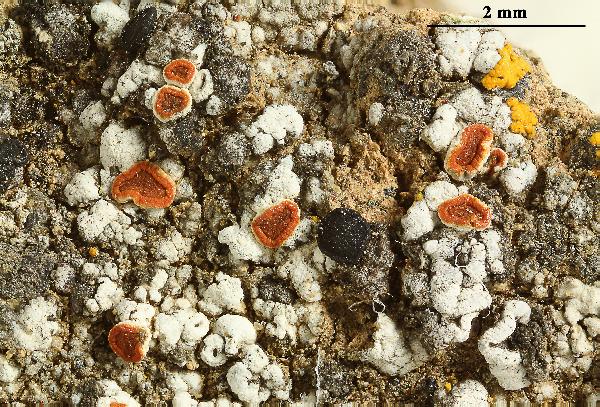

Felix Schumm - CC BY-SA 4.0
[VZR33, 19548], Italia, Pelagiae insulae, insula Limosa, in pede collis
"Bandiera", 25 m, ad saxa eruptiva mollia secus viam.Leg. G. Bolognini
& J. Poelt, 16.04.1992. Ex A. Vezda: Lichenes Rariores Exsiccati Nr.
33.


P.L. Nimis; Owner: Department of Life Sciences, University of Trieste
Herbarium: TSB (16486)
2002/02/12


P.L. Nimis; Owner: Department of Life Sciences, University of Trieste
Herbarium: TSB (16486)
2002/02/12


P.L. Nimis; Owner: Department of Life Sciences, University of Trieste
Herbarium: TSB (16486)
2001/11/12
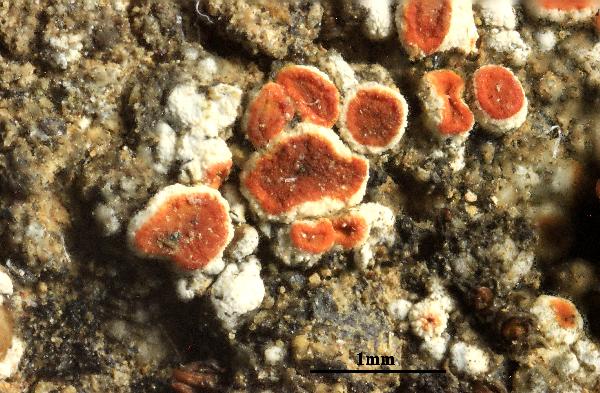

Felix Schumm - CC BY-SA 4.0
[VZR33, 19548], Italia, Pelagiae insulae, insula Limosa, in pede collis
"Bandiera", 25 m, ad saxa eruptiva mollia secus viam.Leg. G. Bolognini
& J. Poelt, 16.04.1992. Ex A. Vezda: Lichenes Rariores Exsiccati Nr.
33.
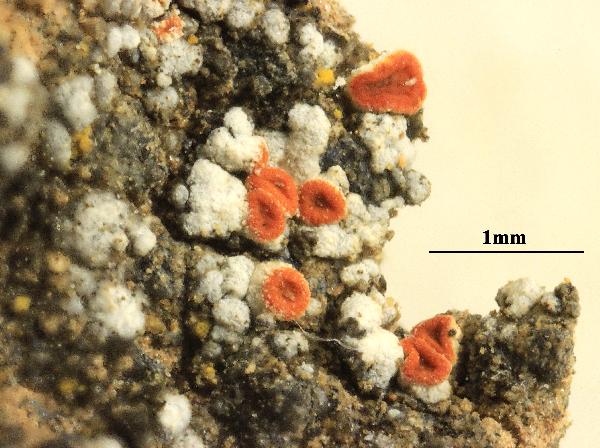

Felix Schumm - CC BY-SA 4.0
[VZR33, 19548], Italia, Pelagiae insulae, insula Limosa, in pede collis
"Bandiera", 25 m, ad saxa eruptiva mollia secus viam.Leg. G. Bolognini
& J. Poelt, 16.04.1992. Ex A. Vezda: Lichenes Rariores Exsiccati Nr.
33.
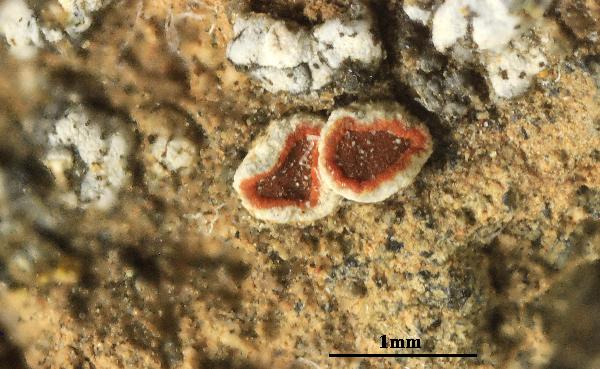

Felix Schumm - CC BY-SA 4.0
[VZR33, 19548], Italia, Pelagiae insulae, insula Limosa, in pede collis
"Bandiera", 25 m, ad saxa eruptiva mollia secus viam.Leg. G. Bolognini
& J. Poelt, 16.04.1992. Ex A. Vezda: Lichenes Rariores Exsiccati Nr.
33.
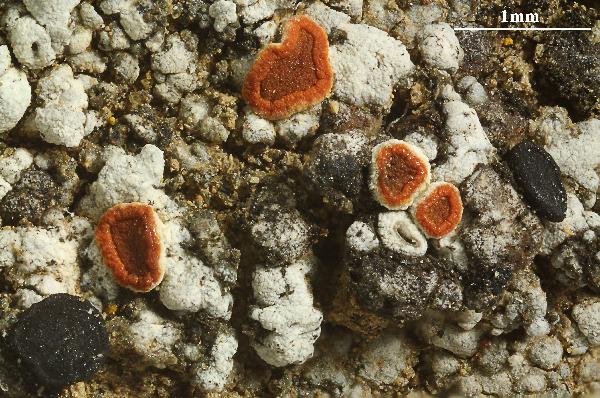

Felix Schumm - CC BY-SA 4.0
[VZR33, 19548], Italia, Pelagiae insulae, insula Limosa, in pede collis
"Bandiera", 25 m, ad saxa eruptiva mollia secus viam.Leg. G. Bolognini
& J. Poelt, 16.04.1992. Ex A. Vezda: Lichenes Rariores Exsiccati Nr.
33.
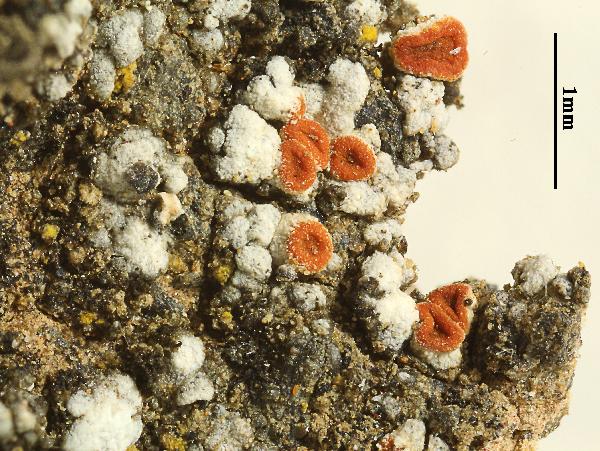

Felix Schumm - CC BY-SA 4.0
[VZR33, 19548], Italia, Pelagiae insulae, insula Limosa, in pede collis
"Bandiera", 25 m, ad saxa eruptiva mollia secus viam.Leg. G. Bolognini
& J. Poelt, 16.04.1992. Ex A. Vezda: Lichenes Rariores Exsiccati Nr.
33.
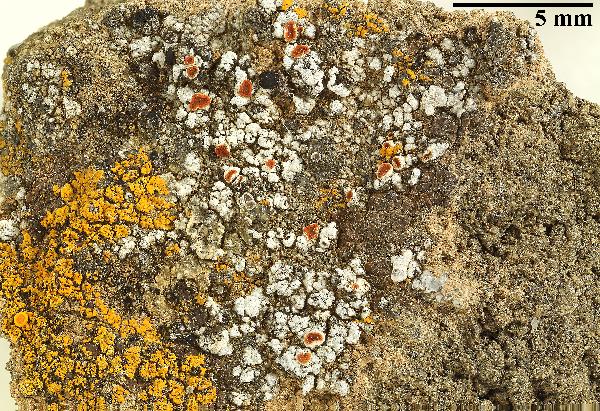

Felix Schumm - CC BY-SA 4.0
[VZR33, 19548], Italia, Pelagiae insulae, insula Limosa, in pede collis
"Bandiera", 25 m, ad saxa eruptiva mollia secus viam.Leg. G. Bolognini
& J. Poelt, 16.04.1992. Ex A. Vezda: Lichenes Rariores Exsiccati Nr.
33.
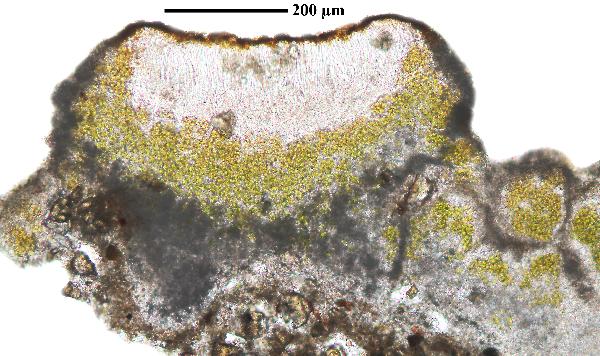

Felix Schumm - CC BY-SA 4.0
[VZR33, 19548], Italia, Pelagiae insulae, insula Limosa, in pede collis
"Bandiera", 25 m, ad saxa eruptiva mollia secus viam.Leg. G. Bolognini
& J. Poelt, 16.04.1992. Ex A. Vezda: Lichenes Rariores Exsiccati Nr.
33.
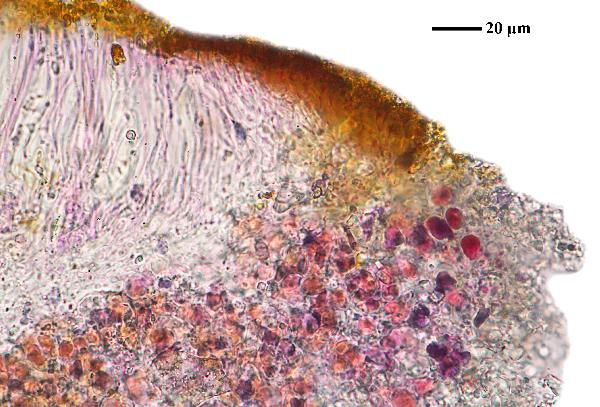

Felix Schumm - CC BY-SA 4.0
[VZR33, 19548], Italia, Pelagiae insulae, insula Limosa, in pede collis
"Bandiera", 25 m, ad saxa eruptiva mollia secus viam.Leg. G. Bolognini
& J. Poelt, 16.04.1992. Ex A. Vezda: Lichenes Rariores Exsiccati Nr.
33.
Growth form: Crustose
Substrata: rocks, soil, terricolous mosses, and plant debris
Photobiont: green algae other than Trentepohlia
Reproductive strategy: mainly sexual
Commonnes-rarity: (info)
Alpine belt: absent
Subalpine belt: absent
Oromediterranean belt: absent
Montane belt: absent
Submediterranean belt: absent
Padanian area: absent
Humid submediterranean belt: absent
Humid mediterranean belt: rare
Dry mediterranean belt: very rare

Predictive model
| Herbarium samples |


Felix Schumm - CC BY-SA 4.0
[VZR33, 19548], Italia, Pelagiae insulae, insula Limosa, in pede collis "Bandiera", 25 m, ad saxa eruptiva mollia secus viam.Leg. G. Bolognini & J. Poelt, 16.04.1992. Ex A. Vezda: Lichenes Rariores Exsiccati Nr. 33.


P.L. Nimis; Owner: Department of Life Sciences, University of Trieste
Herbarium: TSB (16486)
2002/02/12


P.L. Nimis; Owner: Department of Life Sciences, University of Trieste
Herbarium: TSB (16486)
2002/02/12


P.L. Nimis; Owner: Department of Life Sciences, University of Trieste
Herbarium: TSB (16486)
2001/11/12


Felix Schumm - CC BY-SA 4.0
[VZR33, 19548], Italia, Pelagiae insulae, insula Limosa, in pede collis "Bandiera", 25 m, ad saxa eruptiva mollia secus viam.Leg. G. Bolognini & J. Poelt, 16.04.1992. Ex A. Vezda: Lichenes Rariores Exsiccati Nr. 33.


Felix Schumm - CC BY-SA 4.0
[VZR33, 19548], Italia, Pelagiae insulae, insula Limosa, in pede collis "Bandiera", 25 m, ad saxa eruptiva mollia secus viam.Leg. G. Bolognini & J. Poelt, 16.04.1992. Ex A. Vezda: Lichenes Rariores Exsiccati Nr. 33.


Felix Schumm - CC BY-SA 4.0
[VZR33, 19548], Italia, Pelagiae insulae, insula Limosa, in pede collis "Bandiera", 25 m, ad saxa eruptiva mollia secus viam.Leg. G. Bolognini & J. Poelt, 16.04.1992. Ex A. Vezda: Lichenes Rariores Exsiccati Nr. 33.


Felix Schumm - CC BY-SA 4.0
[VZR33, 19548], Italia, Pelagiae insulae, insula Limosa, in pede collis "Bandiera", 25 m, ad saxa eruptiva mollia secus viam.Leg. G. Bolognini & J. Poelt, 16.04.1992. Ex A. Vezda: Lichenes Rariores Exsiccati Nr. 33.


Felix Schumm - CC BY-SA 4.0
[VZR33, 19548], Italia, Pelagiae insulae, insula Limosa, in pede collis "Bandiera", 25 m, ad saxa eruptiva mollia secus viam.Leg. G. Bolognini & J. Poelt, 16.04.1992. Ex A. Vezda: Lichenes Rariores Exsiccati Nr. 33.


Felix Schumm - CC BY-SA 4.0
[VZR33, 19548], Italia, Pelagiae insulae, insula Limosa, in pede collis "Bandiera", 25 m, ad saxa eruptiva mollia secus viam.Leg. G. Bolognini & J. Poelt, 16.04.1992. Ex A. Vezda: Lichenes Rariores Exsiccati Nr. 33.


Felix Schumm - CC BY-SA 4.0
[VZR33, 19548], Italia, Pelagiae insulae, insula Limosa, in pede collis "Bandiera", 25 m, ad saxa eruptiva mollia secus viam.Leg. G. Bolognini & J. Poelt, 16.04.1992. Ex A. Vezda: Lichenes Rariores Exsiccati Nr. 33.




